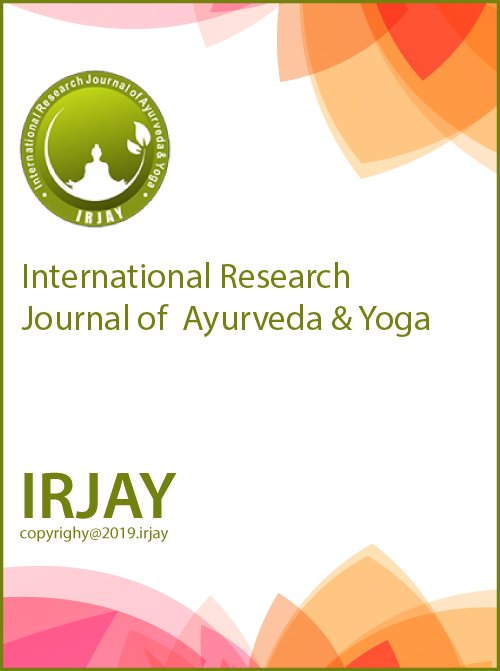Effect of Agnikarma Therapy on Musculoskeletal Pain – A Review Article
DOI:
https://doi.org/10.48165/Keywords:
Agnikarma, Pain, Para surgical, RujaAbstract
In Ayurveda, the word “pain” can be correlated with Ruja, which is caused due to vitiation of Vata. Use of heat therapy for various ailments was found in Ancient Ayurveda treatises. There are different treatment modalities in Ayurveda, which are described by Acharyas, Agnikarma (heat therapy) is one among them. Acharya Sushruta has mentioned use of Agnikarma in various disorders such as Granthi (tumor), Arsha
(hemorrhoids), Bhagandar (fistula), Arbuda (tumor), Shlipad (filariasis), Antra Vrana (internal injury), and Nadi Vrana (sinuses) in detail. There are different materials that are used, such as Pippali (Piper longum), Aja Shakrut (goat excreta), Godanta (gypsum), Shara (arrow), Shalakha (metal rod), Kshaudra (honey), Guda (jaggery), and Sneha (oil/fat), for giving Agnikarma to various parts of the body such as skin, muscles, blood vessels, and ligaments. As Agnikarma is a para-surgical procedure, Acharya Charak has not described it in separate chapter but has described it as one of the treatment measures in different Vatavyadhis (neuro muscle skeletal disorders) such as Gridhrasi (sciatica). If the drugs such as non steroidal anti-inflammatory drugs, which are generally used for relieving pain factor in musculoskeletal disorders, are used for longer duration they can cause potential side effects on the body; hence, there is an emerging need to search for a safe option for the same. In this article, an attempt has been made to search the researchers conducted on Agnikarma related to musculoskeletal disorders to establish its role in musculoskeletal pain.
Downloads
References
Golwalla AF, Golwalla SA. Medicine for Students. 21st ed. Mumbai: Asia Publishing House; 1970. p. 1032.
Green GA. Understanding NSAIDs: From aspirin to COX-2. Clin Cornerstone 2001; 3:50-60.
Acharya JT, editor. Sushruta Samhita of Sushruta, Chikitsa Sthana, Ch.4, Ver. 8. Reprint ed. Varanasi: Chaukhamba Surbharti Prakashan; 2009. p. 420.
Acharya JT, editor. Sushruta Samhita of Sushruta, Sutra Sthana, Ch. 12, Ver. 10. Reprint ed. Varanasi: Chaukhamba Surbharti Prakashan; 2009. P. 52.
Acharya JT, editor. Sushruta Samhita of Sushruta, Sutra Sthana, Ch. 5, Ver. 3. Reprint ed. Varanasi: Chaukhamba Surbharti Prakashan; 2009. P. 18.
Shastri AD, editor. Sushruta Samhita of Sushruta (Part I), Sutra Sthana, Ch. 19, Ver. 9-24. 12th ed. Varanasi: Cahukhambha Sanskrit Bhavan; 2001. p. 79-81.
Acharya JT, editor. Sushruta Samhita of Sushruta, Sutra Sthana, Ch. 12, Ver. 6. Reprint
ed. Varanasi: Chaukhamba Surbharti Prakashan; 2009. p. 51.
Bakhashi B, Gupta SK, Rajagopala M, Bhuyan C. A comparative study of Agni karma with Lauha, Tamra and Panchadhatu Shalakas in Gridhrasi (Sciatica). Ayu 2010;31:240-4. [PUBMED]
Felson DT. Epidemiology of hip and knee osteoarthritis. Epidemiol Rev 1988;10:1-28. 10. Acharya JT, editor. Charaka Samhita of Agnivesha, Sutra Sthana, Ch. 10, Ver. 17. Reprint ed. Varanasi: Chaukhambha Prakashan; 2009. p. 67.
Mahajan A, Tandon V, Verma S, Sharma S. Osteoarthritis and menopause. J Indian Rheumatol Assoc 2005; 13:21-5.

